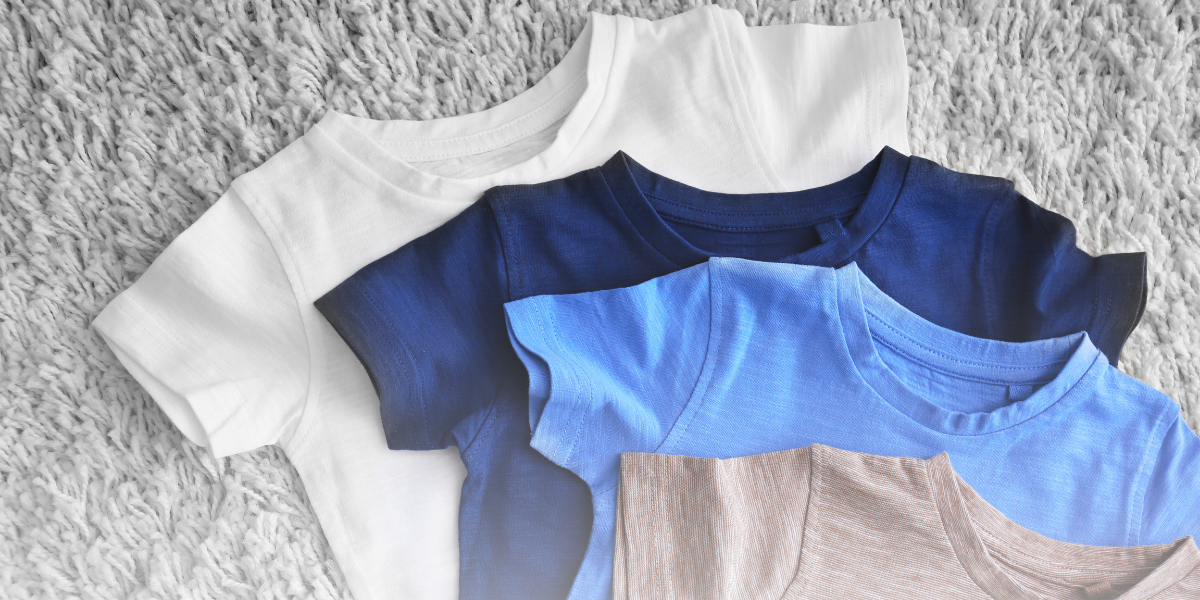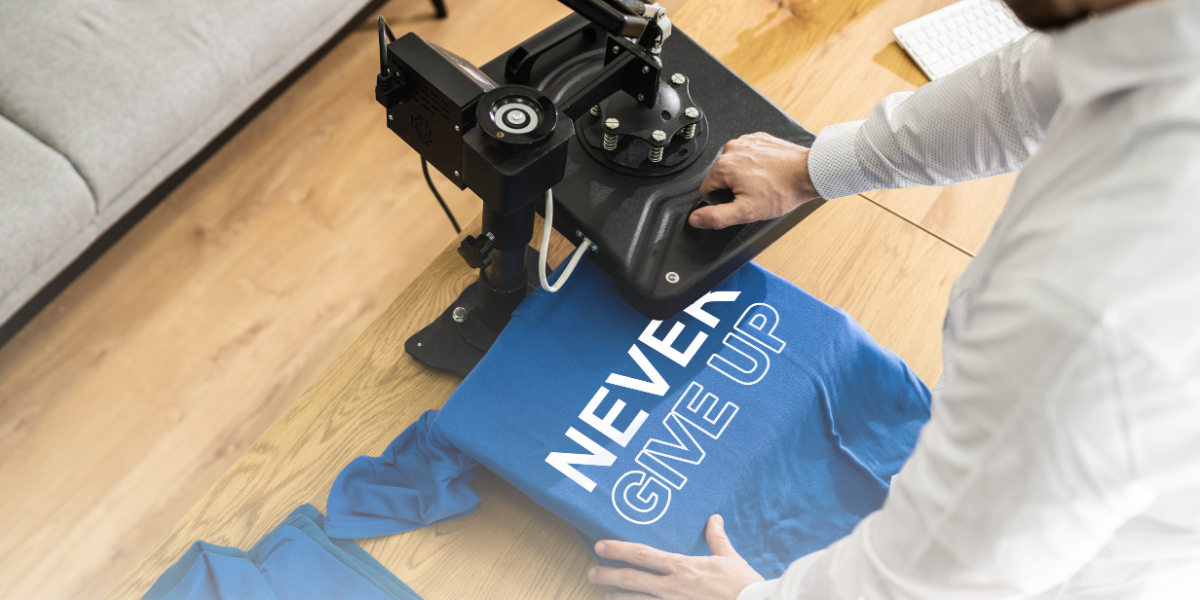Got a fabulous design idea? Ready to turn it into a t-shirt empire? This comprehensive guide will walk you through the steps to launch your own online t-shirt business. From choosing the right platform to mastering marketing strategies, we've got you covered. Tthis guide will provide you with the essential steps to successfully sell t-shirts online. Let's tee off on this exciting adventure and watch your sales soar!
1. Decide Your Market
Before you start selling t-shirts online, it's crucial to identify your target market. Understanding who your customers are will help you create designs that resonate with them and choose the right platforms to reach them. Consider factors like age, gender, interests, and purchasing behaviour. Conduct market research to gather insights and refine your target audience.
Steps to Identify Your Target Market:
- Demographic Research: Analyse factors such as age, gender, income level, and education. For instance, a t-shirt with a trendy, youthful design might appeal to teenagers and young adults, while a more classic or minimalist design could attract an older demographic.
- Psychographic Insights: Understand your potential customers' interests, lifestyles, and values. Are they environmentally conscious? Do they follow specific fashion trends? This information can guide your design and marketing strategies.
- Behavioural Patterns: Study purchasing behaviours, such as frequency of online shopping, preferred price range, and brand loyalty. This helps in pricing your products and choosing promotional strategies.
- Competitor Analysis: Look at other successful t-shirt businesses and their customer base. Identify what works for them and how you can differentiate your offerings.
By combining these insights, you can create detailed customer personas that represent your ideal buyers. This clarity will guide your design choices, marketing efforts, and sales strategies, ensuring you effectively meet the needs and preferences of your target audience.
2. Design Your T-Shirts
Creating appealing and unique t-shirt designs is key to standing out in the crowded market. Here are a few approaches to consider:
DIY (Do It Yourself)
If you have design skills, use graphic design software like Adobe Illustrator or free tools like Canva to create your t-shirt designs. Focus on originality and ensure your designs reflect current trends and customer preferences.
Tips for DIY Design:
- Stay Inspired: Regularly browse design websites, social media, and fashion blogs to stay updated with trends and gather inspiration.
- Use High-Quality Elements: Ensure all images, fonts, and graphics are high-resolution to avoid pixelation when printed.
- Seek Feedback: Share your designs with friends, family, or online communities to get constructive feedback and make improvements.
Hire a Designer
If designing isn’t your forte, hire a professional designer to bring your vision to life. You can find talented designers on freelance platforms or social media. Ensure you communicate your ideas clearly and provide feedback to get the best results.
Tips for Hiring a Designer:
- Set Clear Expectations: Provide a detailed brief with your design ideas, target audience, and any specific elements you want included.
- Review Portfolios: Choose designers whose style matches your vision. Reviewing their previous work can help ensure they’re the right fit.
- Collaborate Effectively: Maintain open communication throughout the design process to ensure the final product meets your expectations.
3. Choose a Printing Method
Selecting the right printing method is crucial for the quality and cost-effectiveness of your t-shirts. Here are the most common methods:
Screen Printing
Ideal for bulk orders, screen printing is cost-effective and produces high-quality prints. However, it’s not suitable for complex designs with many colours.
Pros:
- Durability: Produces vibrant, long-lasting prints.
- Cost-Effective: Economical for large quantities.
Cons:
- Setup Costs: Higher initial setup cost, making it less viable for small orders.
- Colour Limitations: Not ideal for designs with many colours.
Heat Transfer
This method involves printing designs on transfer paper and then applying them to t-shirts using heat. It's good for small batches and allows for detailed designs.
Pros:
- Detail: Can produce detailed and colourful designs.
- Flexibility: Suitable for small quantities.
Cons:
- Durability: Prints may fade or crack over time.
- Texture: Transfers can feel heavy on the fabric.
Direct-to-Garment (DTG)
DTG printing uses a specialized printer to apply ink directly to the fabric. It’s great for intricate designs and small orders, but can be more expensive than other methods.
Pros:
- Detail and Colour: Capable of producing high-detail, multi-coloured designs.
- No Setup Costs: Lower initial costs make it ideal for small runs.
Cons:
- Cost Per Unit: Higher cost per t-shirt compared to screen printing for large orders.
- Fabric Limitations: Works best on 100% cotton garments.
4. Set Up Your Online Store
Choose a Platform
Select an e-commerce platform that suits your needs. Moneris Online offers a seamless setup process, customizable storefronts, and secure payment processing, making it an excellent choice for your t-shirt business.
Benefits of Moneris Online:
- Customizable Storefronts: Tailor your store’s appearance to match your brand’s aesthetic.
- Secure Payment Processing: Ensure customer transactions are safe and reliable.
- Integration: Easily integrate with other tools and platforms to manage your store efficiently.
Customise Your Store
Design your online store to reflect your brand identity. Use consistent colours, fonts, and imagery that align with your t-shirt designs. Include a compelling bio and detailed product descriptions to engage potential customers.
Tips for Customisation:
- Consistent Branding: Ensure your store’s design is cohesive with your overall brand image.
- High-Quality Images: Use professional photos of your t-shirts to attract buyers.
- Engaging Content: Write compelling product descriptions that highlight the features and benefits of your t-shirts.
Upload Your Products
Add high-quality images of your t-shirts along with detailed descriptions. Mention the material, size options, and care instructions to provide customers with all the information they need.
Tips for Product Listings:
- Detail-Oriented: Include all relevant information such as size, material, and care instructions.
- SEO Friendly: Use relevant keywords to improve your product’s visibility in search engines.
- Multiple Images: Show your t-shirts from different angles to give customers a clear view of the product.
5. Pricing Your T-Shirts
Research Market Prices
Look at what other sellers are charging for similar t-shirts. Consider factors like design complexity, material quality, and brand reputation to set competitive prices.
Tips for Market Research:
- Competitor Analysis: Study your competitors’ pricing strategies and product offerings.
- Customer Feedback: Understand what price points your target audience is comfortable with.
Calculate Your Costs
Include the cost of materials, printing, packaging, and shipping. Ensure your prices cover these costs and provide a reasonable profit margin.
Tips for Cost Calculation:
- Breakdown Costs: Itemise all expenses to get a clear understanding of your cost structure.
- Profit Margins: Set a profit margin that covers your costs and ensures profitability.
Set Competitive Prices
Offering a range of prices can attract different types of buyers. For instance, limited-edition prints can be priced higher, while basic designs can be more affordable. Regularly review and adjust your prices based on market trends and customer feedback.
Tips for Competitive Pricing:
- Tiered Pricing: Offer different price points for various product ranges.
- Promotions and Discounts: Use sales and discounts strategically to attract customers and increase sales.
6. Marketing Your T-Shirts
Build an Online Presence
Creating a strong online presence is essential for marketing your t-shirts. Start by setting up profiles on popular social media platforms like Instagram, Facebook, and Pinterest. These platforms are highly visual and perfect for showcasing your t-shirt designs.
Tips for Building an Online Presence:
- Regular Posts: Consistently post high-quality images and updates about your t-shirts. Share behind-the-scenes content to engage your audience.
- Engage with Followers: Respond to comments and messages to build a community around your brand. Engaging with your audience helps build loyalty and trust.
- Use Hashtags: Utilise relevant hashtags to increase the visibility of your posts. Research popular hashtags in the fashion and t-shirt niche to attract more followers.
Optimise for SEO
Search Engine Optimisation (SEO) is crucial for driving organic traffic to your online store. By using relevant keywords, you can improve your search engine rankings and make it easier for potential customers to find your t-shirts.
Tips for SEO:
- Keyword Research: Identify keywords related to t-shirt sales and incorporate them into your product titles, descriptions, and blog posts.
- Quality Content: Create informative and engaging content that includes your keywords naturally. This could be blog posts about fashion trends, t-shirt care tips, or the inspiration behind your designs.
- On-Page SEO: Optimise your website’s meta titles, descriptions, and image alt texts with relevant keywords to enhance your site’s visibility on search engines.
Use Email Marketing
Email marketing is a powerful tool for keeping your audience informed and engaged. Collect email addresses through your website, social media, and in-person events to build a mailing list.
Tips for Email Marketing:
- Newsletters: Send regular newsletters with updates on new designs, special offers, and upcoming events.
- Personalization: Personalise your emails to make your customers feel valued. Use their names and tailor content based on their preferences and purchase history.
- Call-to-Action: Include clear call-to-actions (CTAs) in your emails to encourage recipients to visit your store, make a purchase, or share your content.
Collaborate with Influencers
Partnering with social media influencers who align with your brand can significantly boost your visibility and credibility. Influencers can introduce your t-shirts to their followers, providing valuable social proof.
Tips for Collaborating with Influencers:
- Identify Relevant Influencers: Look for influencers whose followers match your target market. Consider their engagement rates and the type of content they post.
- Build Relationships: Engage with influencers by liking and commenting on their posts before reaching out. This can help build a relationship and increase the likelihood of collaboration.
- Clear Agreements: Clearly outline the terms of the collaboration, including expectations, deliverables, and compensation. This ensures both parties understand and agree on the partnership's scope.
7. Selling on Multiple Channels
Online Marketplaces
Expanding your reach by selling on popular online marketplaces can be highly beneficial. These platforms already have a large customer base, which can help you attract more buyers.
Tips for Selling on Marketplaces:
- Unique Branding: Differentiate your products with unique branding and high-quality images.
- Customer Service: Provide excellent customer service to build a positive reputation on these platforms.
- Monitor Reviews: Keep an eye on customer reviews and feedback to continuously improve your offerings.
Your Own Website
Having your own website gives you full control over your brand and customer experience. Platforms like Moneris Online can help you create a professional and secure online store.
Benefits of Your Own Website:
- Brand Control: Full control over your website’s design, branding, and user experience.
- Customer Data: Access to valuable customer data that can inform your marketing strategies.
- Seamless Payment Processing: Moneris Online offers secure and reliable payment processing to ensure a smooth checkout experience for your customers.
Art Fairs and Exhibitions
Participating in local art fairs and exhibitions allows you to showcase your t-shirts in person. This direct interaction can help you connect with customers and gather valuable feedback.
- Tips for Art Fairs:
- Engaging Displays: Create attractive and engaging displays to draw people to your booth.
- Promotional Materials: Bring business cards, flyers, and other promotional materials to hand out to potential customers.
- Networking: Use these events to network with other artists and entrepreneurs, which can lead to future collaboration opportunities.
Galleries
Displaying your t-shirts in local galleries can help you reach a niche audience that appreciates unique and artistic designs.
Tips for Working with Galleries:
- Research: Identify galleries that align with your brand and target audience.
- Professional Presentation: Ensure your t-shirts are presented professionally, with high-quality hangers, tags, and packaging.
- Consignment Agreements: Clearly outline the terms of consignment, including pricing, duration, and payment terms.
8. Shipping and Handling
Packaging Your T-Shirts
Invest in high-quality packaging to protect your t-shirts during shipping. This ensures your products arrive in perfect condition and enhances the unboxing experience for your customers.
Tips for Packaging:
- Sturdy Materials: Use sturdy mailers or boxes to prevent damage during transit.
- Protective Sleeves: Include protective sleeves or tissue paper to keep t-shirts clean and wrinkle-free.
- Branded Packaging: Incorporate branded packaging materials to reinforce your brand identity and create a memorable unboxing experience.
Choose Reliable Shipping Services
Selecting a reliable shipping service that offers tracking and insurance is essential to ensure your t-shirts arrive safely and give your customers peace of mind.
Tips for Shipping:
- Multiple Options: Offer multiple shipping options, such as standard and expedited, to cater to different customer needs.
- Track Shipments: Provide tracking information to customers so they can monitor their shipment’s progress.
- Insurance: Consider insuring higher-value shipments to protect against loss or damage.
Calculate Shipping Costs
Include shipping costs in your pricing strategy. Transparent shipping fees help avoid surprises for your customers at checkout and ensure you cover your expenses.
Tips for Calculating Shipping Costs:
- Accurate Weights and Dimensions: Use accurate weights and dimensions to calculate shipping costs.
- Flat Rate Shipping: Consider offering flat rate shipping for simplicity.
- Free Shipping Thresholds: Offer free shipping for orders over a certain amount to encourage larger purchases.
9. Providing Excellent Customer Service
Communicate Clearly
Clear and consistent communication with your customers is key to building trust and enhancing their experience.
Tips for Communication:
- Order Updates: Keep customers informed about their order status, including confirmation, shipping, and delivery updates.
- Responsive Support: Respond promptly to customer inquiries and issues to show that you value their business.
- Clear Policies: Clearly outline your return, exchange, and refund policies on your website.
Handle Issues Promptly
Address any issues or complaints quickly and professionally. This helps turn a negative experience into a positive one and can lead to loyal customers.
Tips for Handling Issues:
- Listen to Customers: Listen to customers’ concerns and acknowledge their issues.
- Offer Solutions: Provide fair and reasonable solutions, such as replacements, refunds, or discounts on future purchases.
- Follow Up: Follow up with customers to ensure their issues have been resolved satisfactorily.
Encourage Reviews
Positive reviews build credibility and encourage new customers to make a purchase. Actively seek feedback from your customers.
Tips for Encouraging Reviews:
- Request Reviews: Ask satisfied customers to leave reviews on your website and social media pages.
- Incentivize Feedback: Offer incentives, such as discounts on future purchases, for customers who leave reviews.
- Showcase Testimonials: Highlight positive reviews and testimonials on your website and marketing materials to build trust with potential customers.
By following these steps, you can set up a successful online t-shirt business, reach a global audience, and turn your passion into a profitable venture. Remember, consistency and quality are key to building a loyal customer base and achieving long-term success in the online t-shirt market.
Key Takeaways
- Understand Your Market: Identify your target audience to create designs that resonate and choose the right platforms to reach them.
- Create Unique Designs: Whether designing yourself or hiring a professional, ensure your t-shirts are unique and appealing.
- Choose the Right Printing Method: Select from screen printing, heat transfer, or direct-to-garment based on your order size and design complexity.
- Set Up an Online Store: Use platforms like Moneris Online for a customizable, secure, and seamless e-commerce experience.
- Effective Marketing: Leverage social media, SEO, email marketing, and influencer partnerships to promote your t-shirts and attract customers.
Article filed under:
growth strategiesShare




